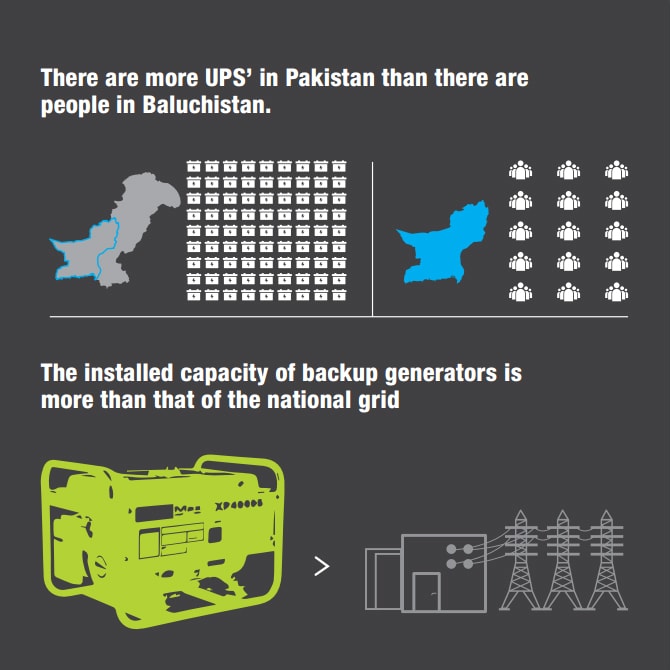7 devastating stats about Pakistan's energy crisis ─ and how you can help end it
Can the government tackle the energy crisis? Doing so in the long run may be possible, but in the immediate term, consumers must begin using more energy-efficient products in order to mitigate the issue, reveals the report "Energy Conservation: Avoid Wastages, Prevent Shortages" by Research and Advocacy for the Advancement of Allied Reforms (Raftaar).
4,000 MegaWatts
Is the average shortfall in the power sector and nearly two billion cubic feet per day (BCFD) in the natural gas sector. The shortfall in the power sector can rise to around 7,000MW or 32 per cent of total demand for electricity.

Rs14 billion
Is the estimated cost to the economy (7% of GDP) of chronic power shortage in Pakistan in the form of loadshedding and power outages last year.
Over 140 million
Is the number of Pakistanis that either have no access to the power grid or suffer over 12 hours of loadshedding daily. Pakistanis who do not have access to the grid are often poorer than those on the grid. Meanwhile, household electricity consumption has grown at an average annual rate of 10pc yearly.


500,000
Is the number of households impacted with unemployment as businesses have been forced to shut down due to energy shortages.

Rs145bn
Is the approximate per annum hit Pakistan has taken in the last five years from system losses in the grid due to inefficient transmission and distribution.
0.7pc
Is the percent of the GGP to which investment in the power sector has fallen in the last 10 years from a high of 1.5pc during the 80s and 90s.

Rs30bn
Is the approximate expenditure by Pakistani households on UPS and battery chargers alone. About 60pc of Pakistani households have some form of UPS as a backup for selected appliances during power cuts and shortages. Backup power sources are a stopgap solution, both wasteful and inefficient.
How can Pakistan cope with chronic power shortage?

Although the government is attempting to add capacity to the grid in order to remedy the persistent power shortage, these measures will take time to come into effect.

A more immediate solution to the problem is the conservation and efficient use of energy, as about 67pc of domestic energy consumption stems from inefficient appliances such as lights and fans.
Another alternative is to shift to renewable forms of energy, such as wind and solar power.
There is enough potential from wind generation to supply all of Pakistan's electricity needs. Half this potential exists in one contiguous belt of Sindh coastline.
There are around 1.2m irrigation pumps installed in Pakistan, with about 90pc of these pumps using diesel directly or indirectly.
The use of solar irrigation pumps for agricultural purposes instead of diesel-powered or tractor driven pumps could mean a 27pc saving in consumption of diesel fuel for irrigation pumping.

The China Pakistan Economic Corridor is another way Pakistan could turn towards cleaner forms of energy, as China is a world leader in total wind and solar installed renewable energy, at about 140,000MW.
Punjab must lead the way in this initiative, as the province is home to the largest population in Pakistan and consumes the most electricity. About 90pc of all tubewells are also in Punjab.
The Raftaar report says the greatest responsibility and opportunity lies with the province to improve energy efficiency and conservation in agriculture, as well as in households and businesses.
About Raftaar
Raftaar is an economic reform platform whose knowledge partners include a coalition with the CDRP (Consortium for Development Policy Research), which is itself a consortium of Pakistan’s top economists and economic think tanks (including the International Growth Centre, Institute of Development and Economic Alternatives and Center for Economic Research in Pakistan).

Dear visitor, the comments section is undergoing an overhaul and will return soon.